Abstract
The in vitro susceptibility to BB-K8, butirosin, gentamicin, sisomicin, and tobramycin of seven groups of clinically significant gram-negative bacilli and Staphylococcus aureus was assessed by using the International Collaborative Study-World Health Organization criteria. The activity of gentamicin, sisomicin, and tobramycin generally paralleled each other. Sisomicin was the most potent compound by weight and usually demonstrated the most rapid rate of killing. BB-K8 and butirosin were less potent, but higher serum levels may be achieved with these agents. BB-K8 generally showed the greatest ratio between achieveable mean peak serum levels and concentrations needed to inhibit [Formula: see text] of each group of organisms tested. Additionally, BB-K8 was active against six of seven highly gentamicin-resistant strains. All of these antibiotics showed diminished activity at pH 6.4 but only gentamicin and sisomicin showed occasionally enhanced activity at pH 8.4.
Full text
PDF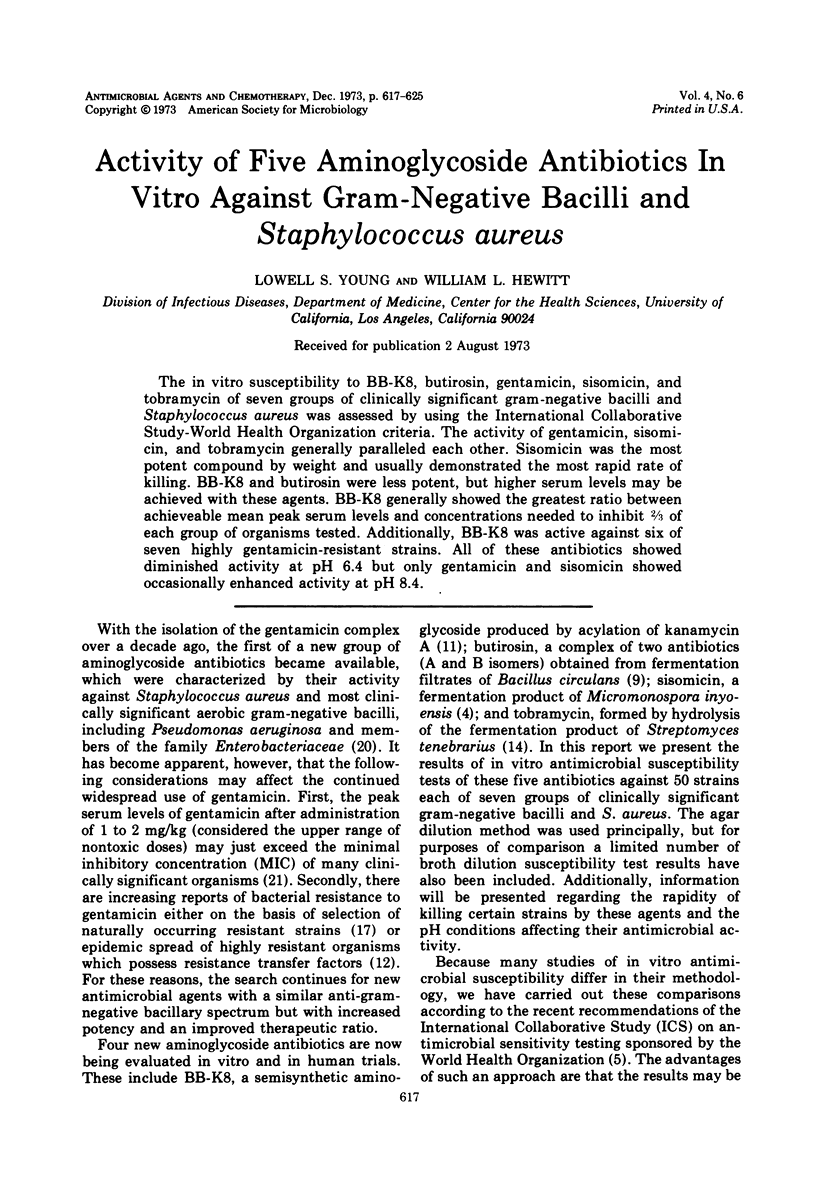
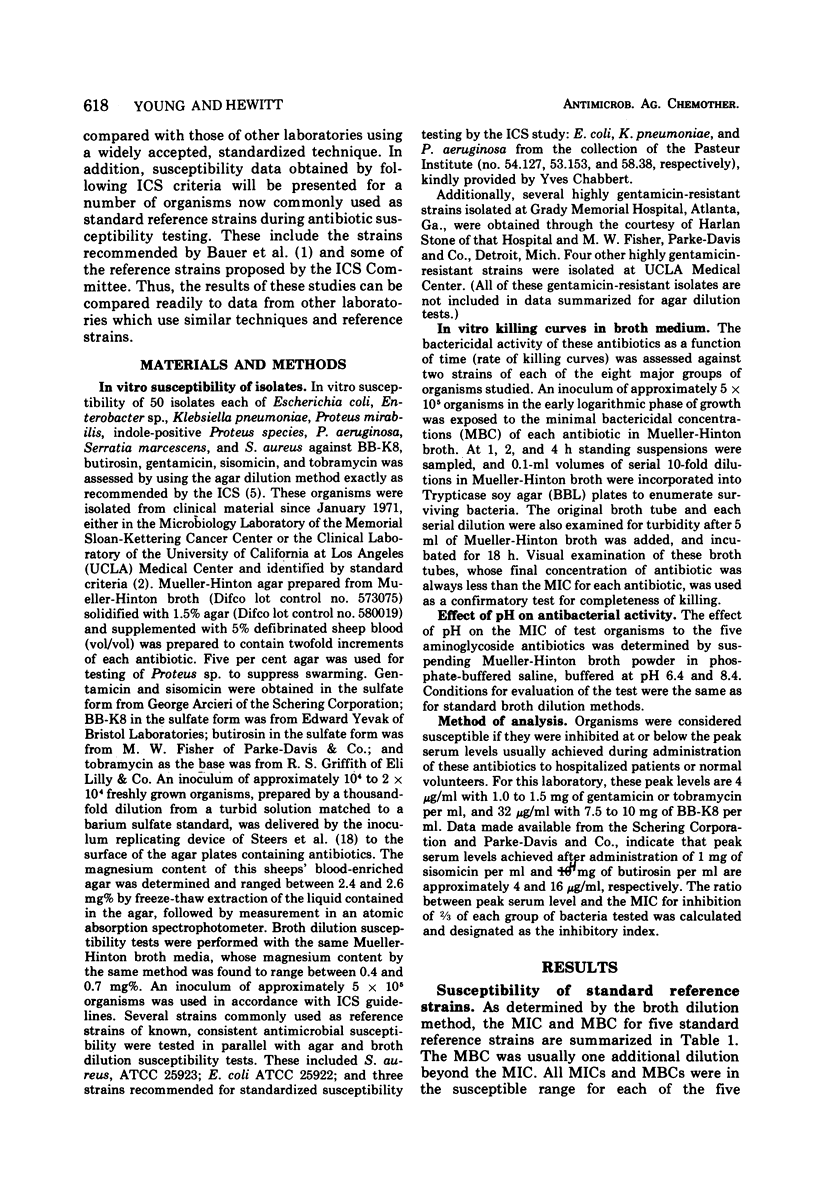
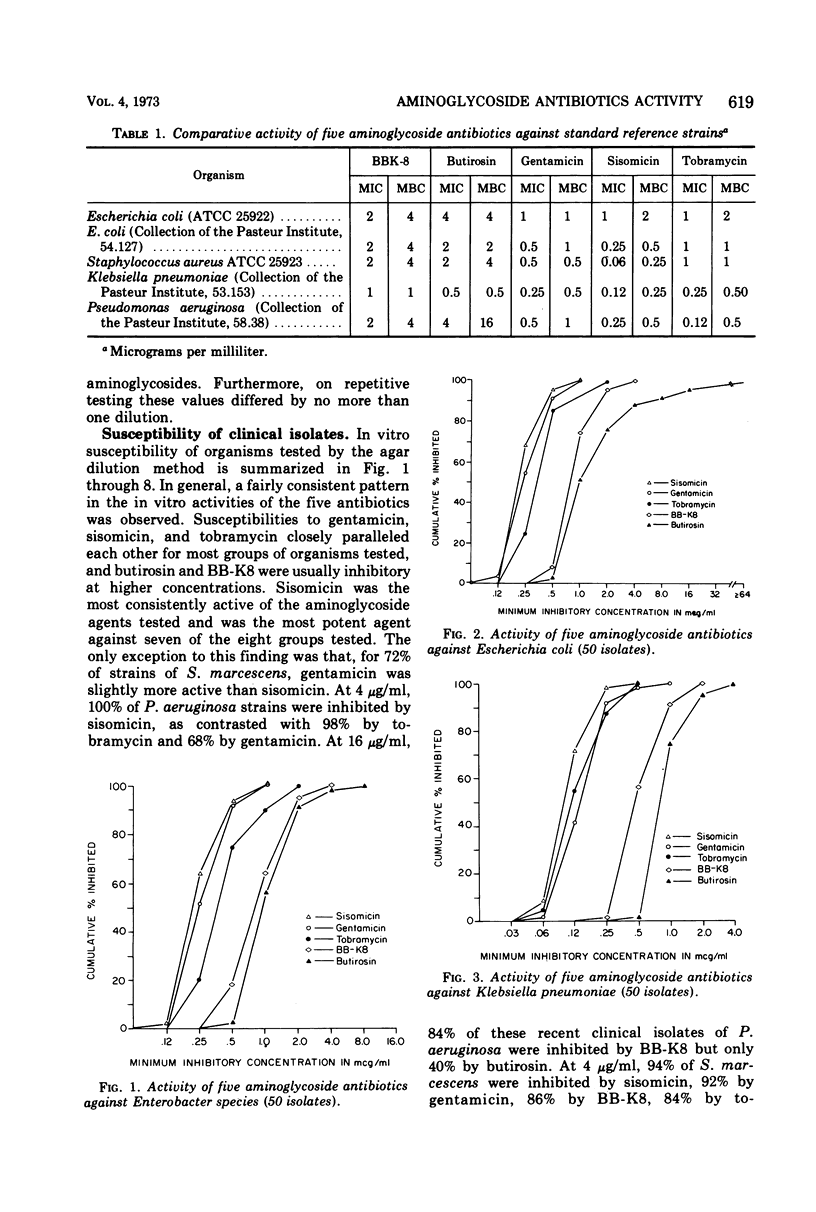
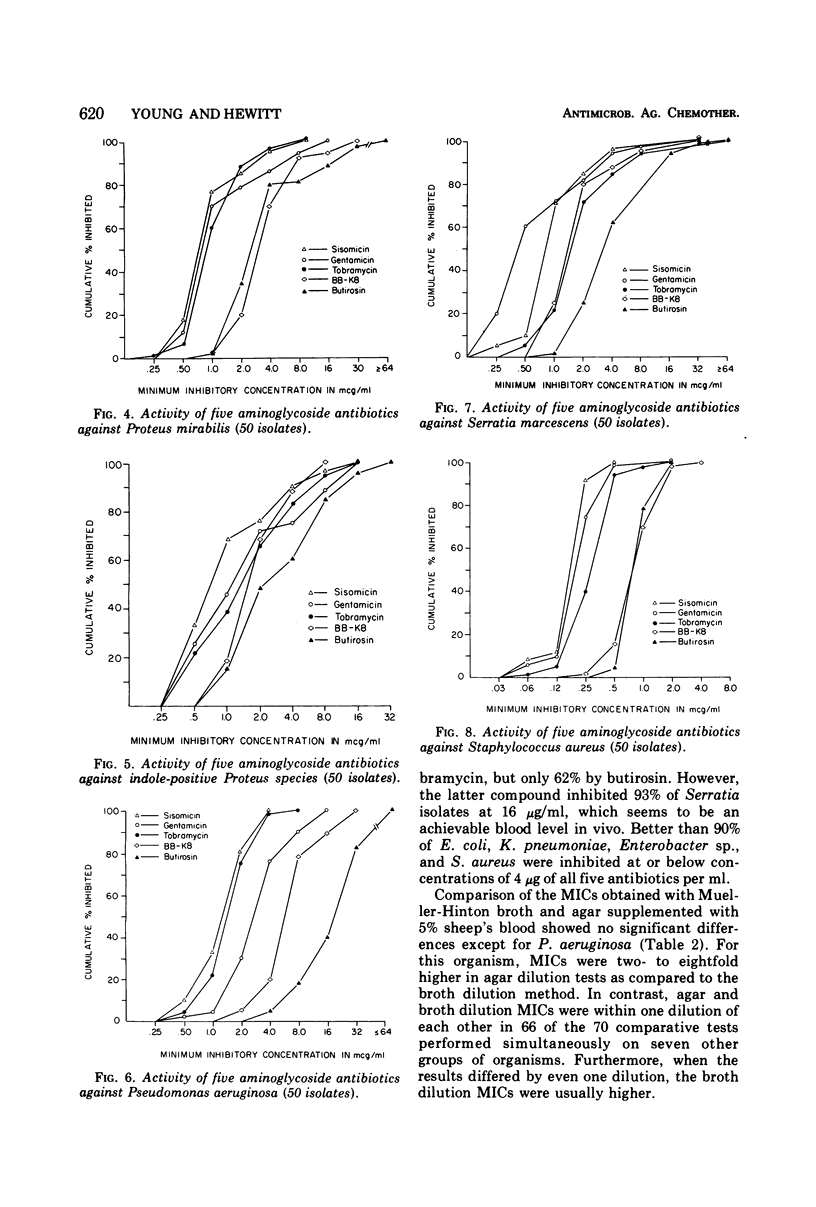
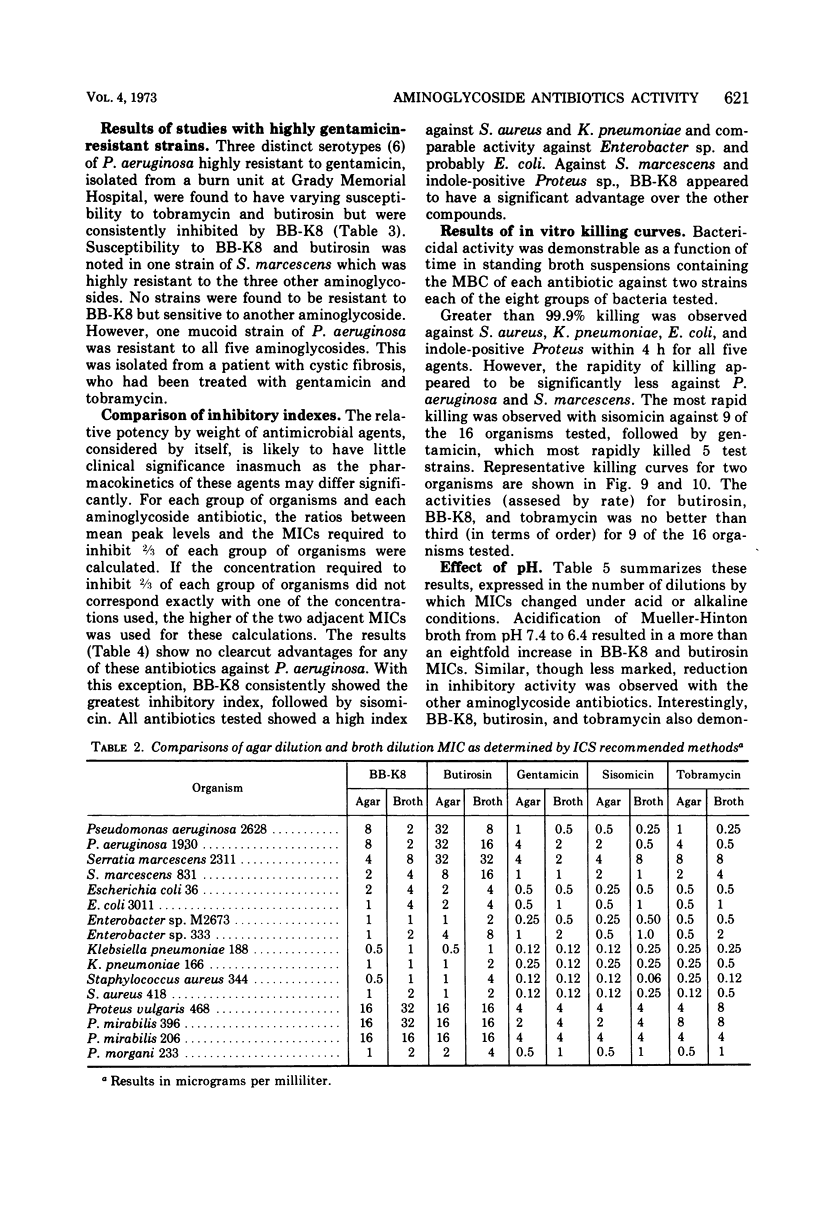
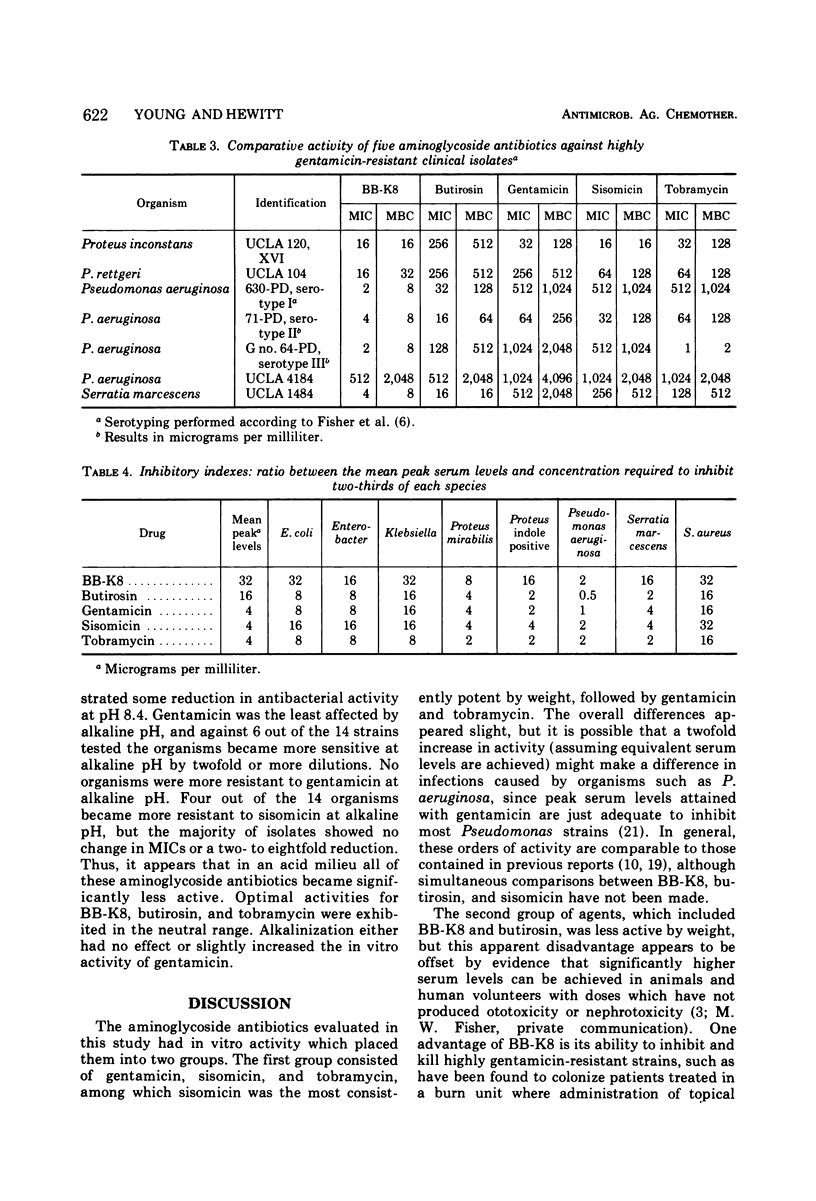
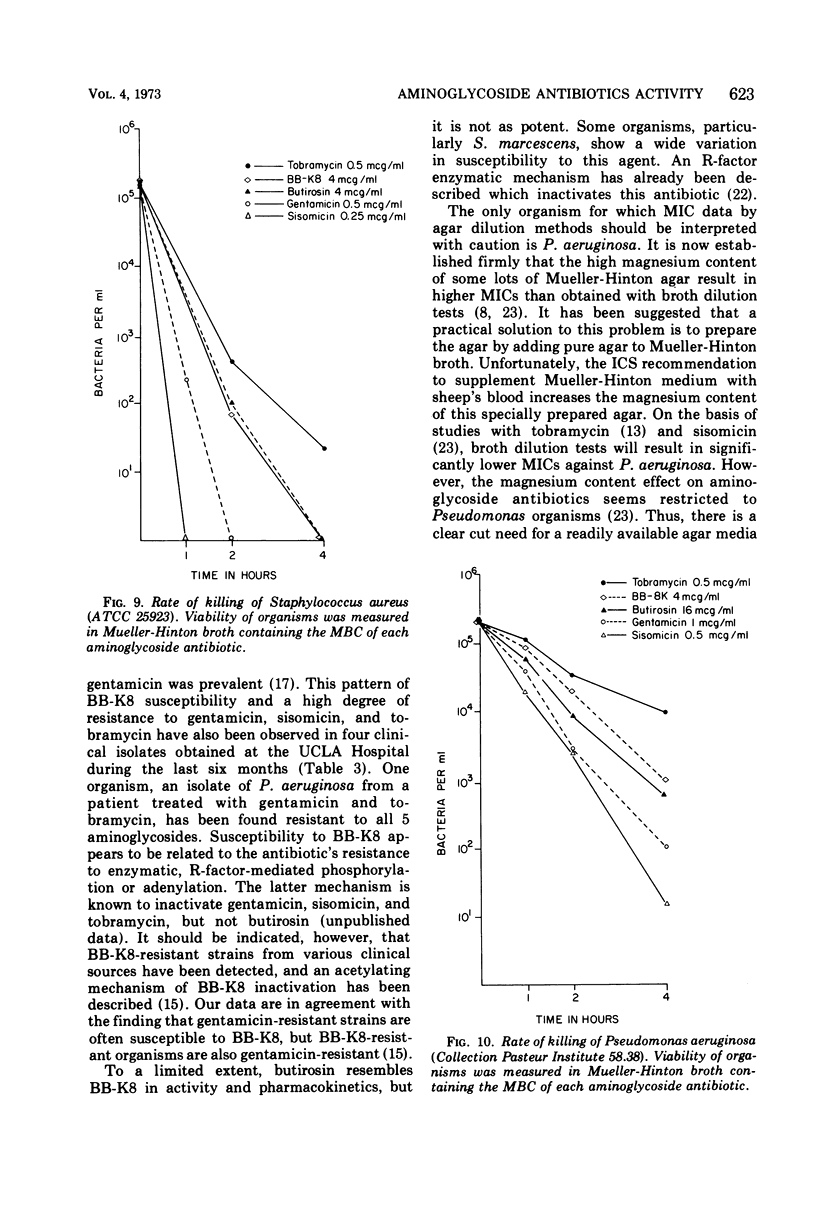
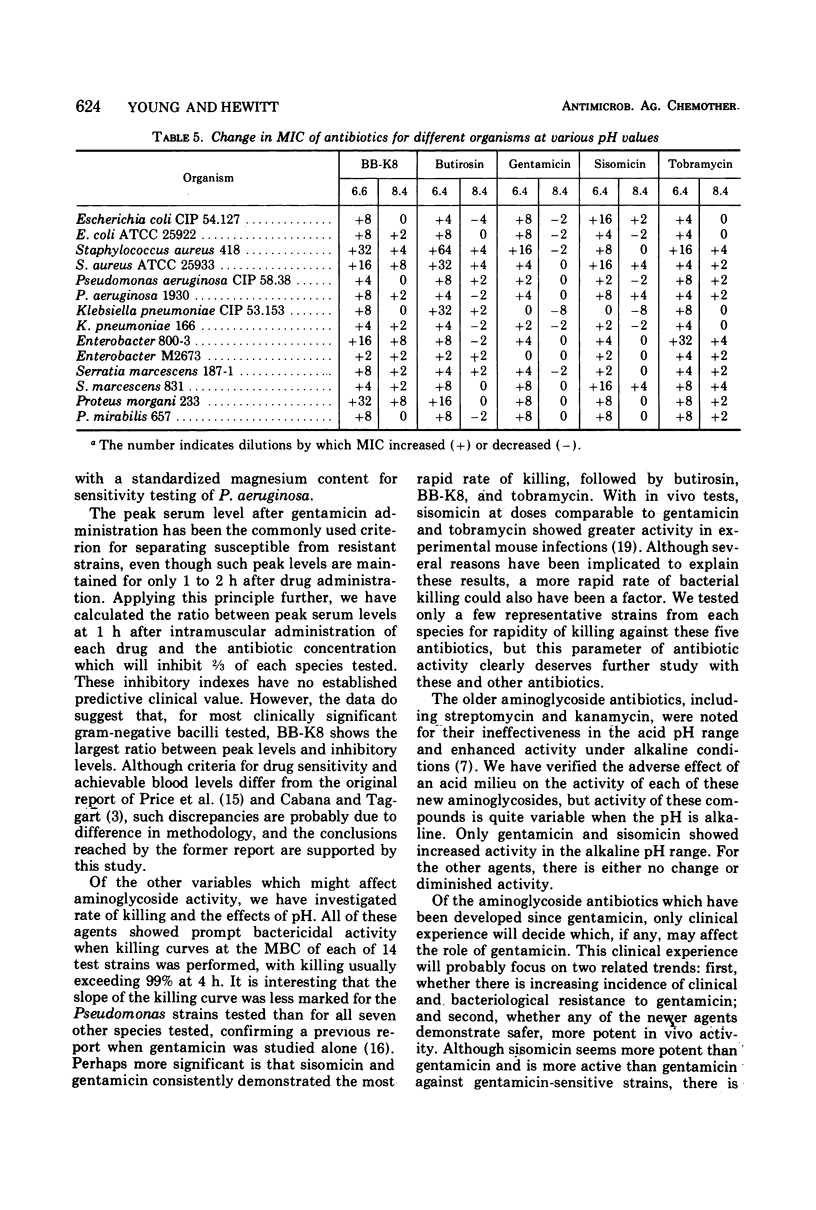
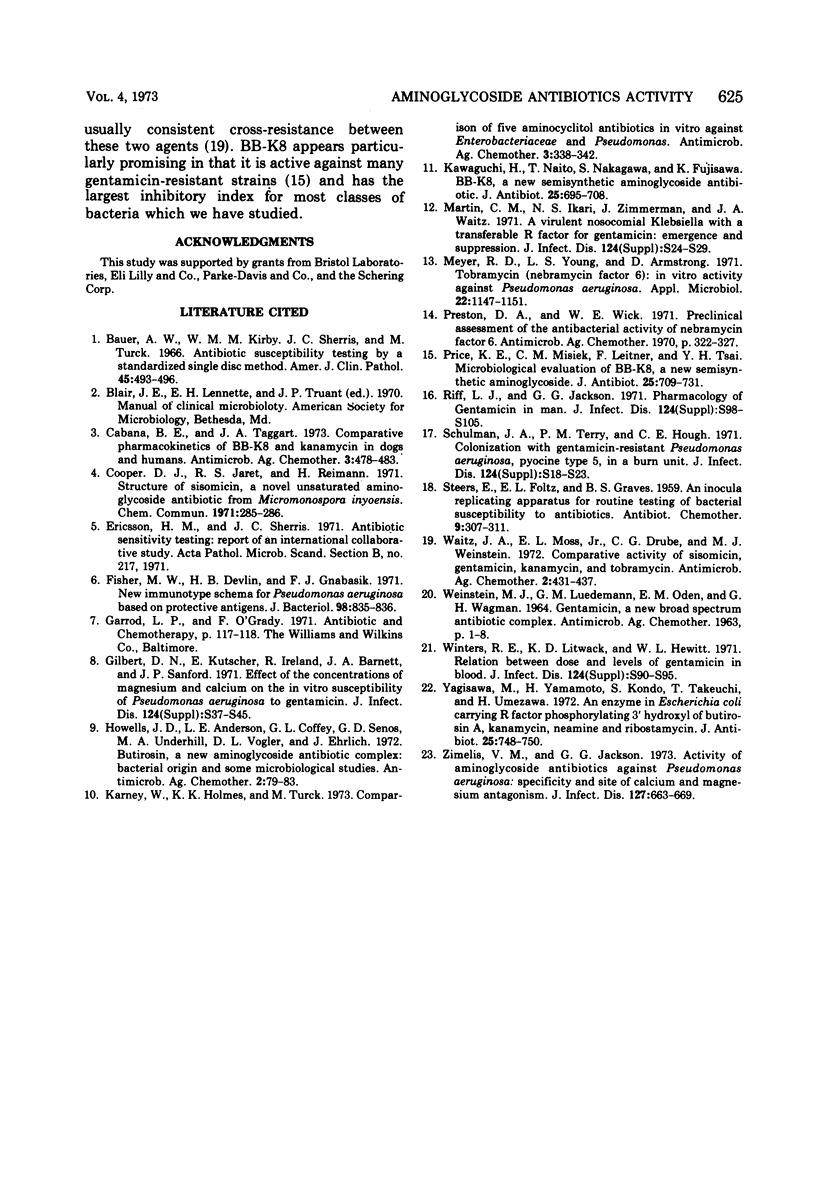
Selected References
These references are in PubMed. This may not be the complete list of references from this article.
- Bauer A. W., Kirby W. M., Sherris J. C., Turck M. Antibiotic susceptibility testing by a standardized single disk method. Am J Clin Pathol. 1966 Apr;45(4):493–496. [PubMed] [Google Scholar]
- Cabana B. E., Taggart J. G. Comparative pharmacokinetics of BB-K8 and kanamycin in dogs and humans. Antimicrob Agents Chemother. 1973 Apr;3(4):478–483. doi: 10.1128/aac.3.4.478. [DOI] [PMC free article] [PubMed] [Google Scholar]
- Ericsson H. M., Sherris J. C. Antibiotic sensitivity testing. Report of an international collaborative study. Acta Pathol Microbiol Scand B Microbiol Immunol. 1971;217(Suppl):1+–1+. [PubMed] [Google Scholar]
- Fisher M. W., Devlin H. B., Gnabasik F. J. New immunotype schema for Pseudomonas aeruginosa based on protective antigens. J Bacteriol. 1969 May;98(2):835–836. doi: 10.1128/jb.98.2.835-836.1969. [DOI] [PMC free article] [PubMed] [Google Scholar]
- Gilbert D. N., Kutscher E., Ireland P., Barnett J. A., Sanford J. P. Effect of the concentrations of magnesium and calcium on the in-vitro susceptibility of Pseudomonas aeruginosa to gentamicin. J Infect Dis. 1971 Dec;124 (Suppl):S37–S45. doi: 10.1093/infdis/124.supplement_1.s37. [DOI] [PubMed] [Google Scholar]
- Howells J. D., Anderson L. E., Coffey G. L., Senos G. D., Underhill M. A., Vogler D. L., Ehrlich J. Butirosin, a new aminoglycosidic antibiotic complex: bacterial origin and some microbiological studies. Antimicrob Agents Chemother. 1972 Aug;2(2):79–83. doi: 10.1128/aac.2.2.79. [DOI] [PMC free article] [PubMed] [Google Scholar]
- Karney W., Holmes K. K., Turck M. Comparison of five aminocyclitol antibiotics in vitro against Enterobacteriaceae and Pseudomonas. Antimicrob Agents Chemother. 1973 Mar;3(3):338–342. doi: 10.1128/aac.3.3.338. [DOI] [PMC free article] [PubMed] [Google Scholar]
- Martin C. M., Ikari N. S., Zimmerman J., Waitz J. A. A virulent nosocomial Klebsiella with a transferable R factor for gentamicin: emergence and suppression. J Infect Dis. 1971 Dec;124 (Suppl):S24–S29. doi: 10.1093/infdis/124.supplement_1.s24. [DOI] [PubMed] [Google Scholar]
- Meyer R. D., Young L. S., Armstrong D. Tobramycin (nebramycin factor 6): in vitro activity against Pseudomonas aeruginosa. Appl Microbiol. 1971 Dec;22(6):1147–1151. doi: 10.1128/am.22.6.1147-1151.1971. [DOI] [PMC free article] [PubMed] [Google Scholar]
- Preston D. A., Wick W. E. Preclinical assessment of the antibacterial activity of nebramycin factor 6. Antimicrob Agents Chemother (Bethesda) 1970;10:322–327. doi: 10.1128/AAC.10.2.322. [DOI] [PubMed] [Google Scholar]
- Riff L. J., Jackson G. G. Pharmacology of gentamicin in man. J Infect Dis. 1971 Dec;124 (Suppl):S98–105. doi: 10.1093/infdis/124.supplement_1.s98. [DOI] [PubMed] [Google Scholar]
- Shulman J. A., Terry P. M., Hough C. E. Colonization with gentamicin-resistant Pseudomonas aeruginosa, pyocine type 5, in a burn unit. J Infect Dis. 1971 Dec;124 (Suppl):S18–S23. doi: 10.1093/infdis/124.supplement_1.s18. [DOI] [PubMed] [Google Scholar]
- Waitz J. A., Moss E. L., Jr, Drube C. G., Weinstein M. J. Comparative activity of sisomicin, gentamicin, kanamycin, and tobramycin. Antimicrob Agents Chemother. 1972 Dec;2(6):431–437. doi: 10.1128/aac.2.6.431. [DOI] [PMC free article] [PubMed] [Google Scholar]
- Winters R. E., Litwack K. D., Hewitt W. L. Relation between dose and levels of gentamicin in blood. J Infect Dis. 1971 Dec;124 (Suppl):S90–S95. doi: 10.1093/infdis/124.supplement_1.s90. [DOI] [PubMed] [Google Scholar]
- Yagisawa M., Yamamoto H., Naganawa H., Kondo S., Takeuchi T. A new enzyme in Escherichia coli carrying R-factor phosphorylating 3'-hydroxyl of butirosin A, kanamycin, neamine and ribostamycin. J Antibiot (Tokyo) 1972 Dec;25(12):748–750. doi: 10.7164/antibiotics.25.748. [DOI] [PubMed] [Google Scholar]
- Zimelis V. M., Jackson G. G. Activity of aminoglycoside antibiotics aganst Pseudomonas aeruginosa: specificity and site of calcium and magnesium antagonism. J Infect Dis. 1973 Jun;127(6):663–669. doi: 10.1093/infdis/127.6.663. [DOI] [PubMed] [Google Scholar]


